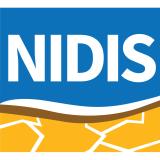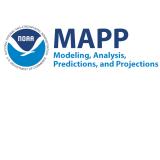For the latest forecasts and critical weather information, visit weather.gov.
Advancing Forecast-Informed Reservoir Operation and Planning for the West Gulf through Integration of Climate Forecasts & Reservoir Water Balance Predictions

For decades, the southwestern U.S. has been plagued by extreme droughts and floods with devastating societal and economic consequences. Specifically, the West Gulf region, which spans much of Texas and New Mexico, is under constant threat of droughts that is amplified by population growth and aggravated by a warming climate. To address the challenge of sustaining water supply under this latent threat, an increasing number of reservoir operators, water managers, and policy-makers in the region have taken an interest in integrating weather and hydrologic forecasts in reservoir operations and drought planning. Today, Forecast-Informed Reservoir Operations (FIRO) has emerged as one strategy for improving water reliability in the region. A centerpiece of contemporary FIRO practice relates to accounting for inherent uncertainties in forecasts.
This research will help advance model-based understanding, monitoring, prediction, predictability, and model representation of drought by producing probabilistic forecasts of hydrologic droughts that account for uncertainties in the forecast climate conditions and impacts of water use.
Specifically, this project aims to:
- Improve accounting and monitoring of the water budget in the West
- Explore the utility and limitations of climate and Earth system models and prediction systems in correctly simulating drought events.
The project team will closely collaborate with the National Weather Service’s West Gulf River Forecast Center and the Texas Water Development Board—two major reservoir operators in the region—and the developers at NOAA Geophysical Fluids Dynamic Laboratory (GFDL). The investigation will focus on two major reservoir systems, one in Texas operated by the U.S. Army Corps of Engineers, and the other in northern New Mexico owned by the U.S. Bureau of Reclamation.
This project is part of the MAPP/NIDIS-supported Drought Task Force V.
Research Snapshot
Yu Zhang, Department of Civil Engineering, University of Texas at Arlington
DongJun Seo, University of Texas at Arlington; Sarah Fakhreddine, Carnegie Mellon University
What to expect from this research
This project will result in:
- Assessments of the potential of the NOAA Geophysical Fluid Dynamics Laboratory’s (GFDL) multi-scale forecast model SPEAR and the North American Multimodel Ensemble (NMME) in anticipating the onset, intensification, and demise of droughts
- Enhancements to the National Weather Service’s Hydrologic Ensemble Forecast System (HEFS) that allow for more realistic depictions of the range of possibilities with respect to inflows and sources/sinks for major reservoirs.











